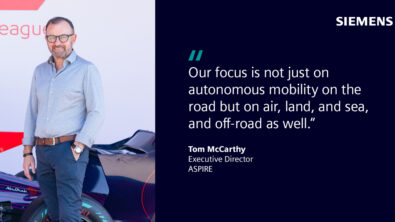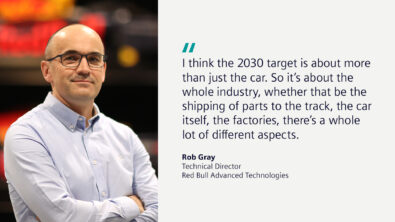Championing Sustainability in Motorsport with Alejandro Agag- Part 2
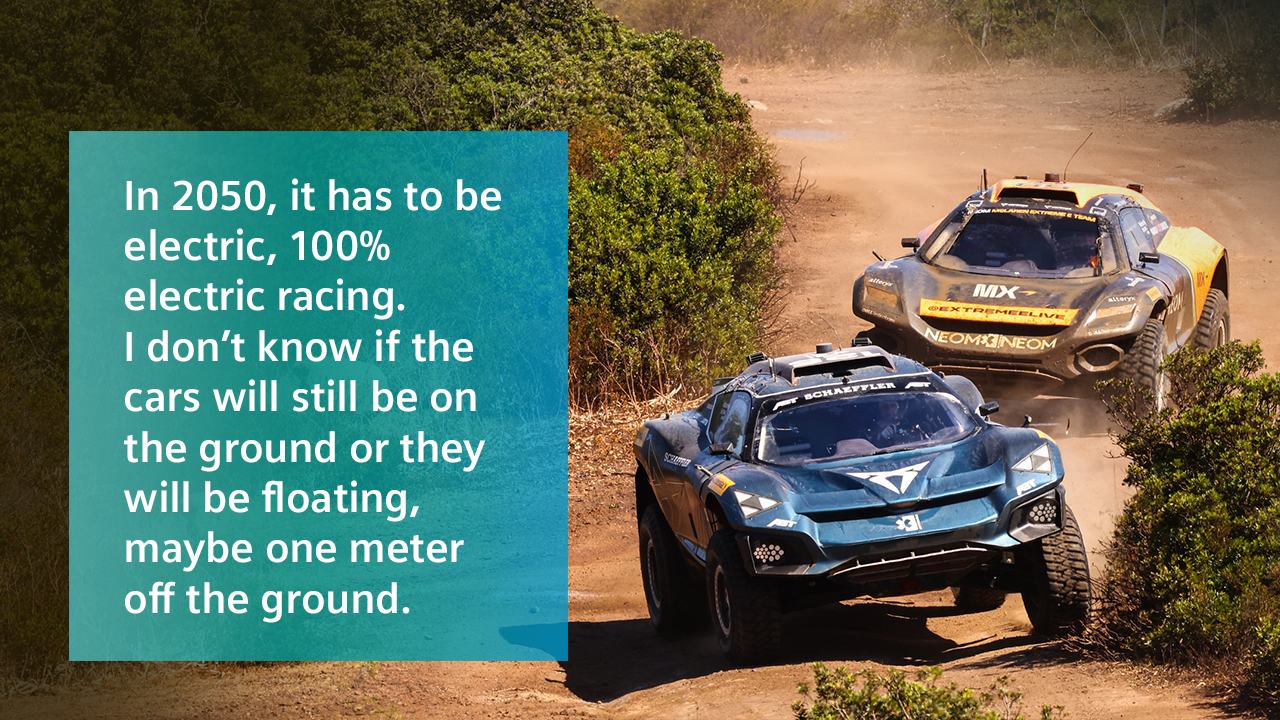
Electric vehicle motorsport, the evolution of Formula E and our mobility future
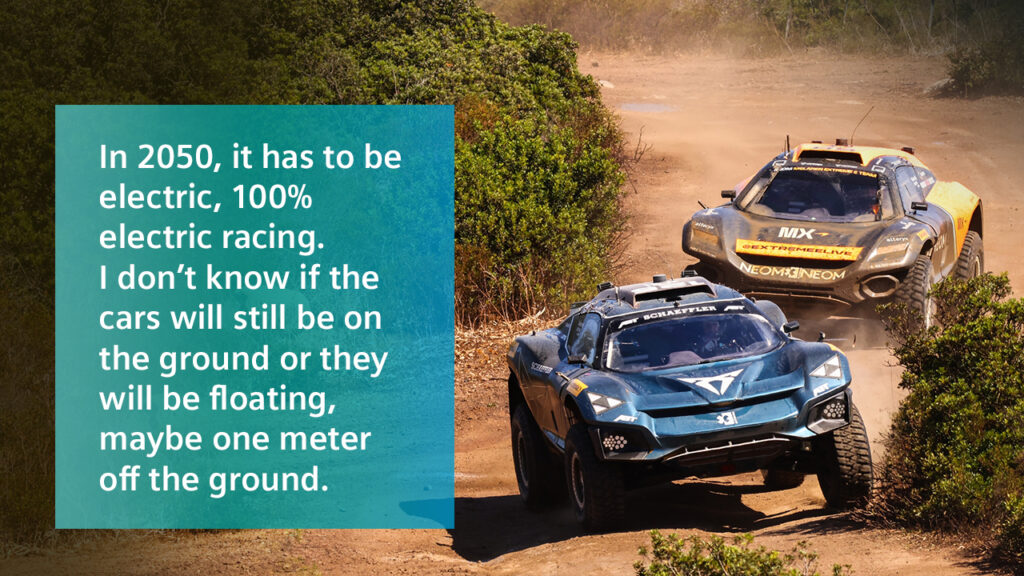
electric racing by 2050
A few decades back, the idea of electric motor racing would have been seen as ridiculous. Fast forward to today, we have successful electric racing competitions both on water and on land.
Making such progress took a few courageous people who were willing and capable of pushing what they knew about motor racing to the edge. Today, such competitions have become a main source of innovation for technological solutions that are taking sustainable transport to the next level. Their success so far has attracted other players in the motor racing world who might have viewed electric motor racing as unviable.
In this episode, the second part of two, Ed Bernardon continues his interview with Alejandro Agag, co-founder, and CEO of Formula E Holdings Ltd. He is also the CEO of Extreme E, Chairman of Formula E, and Chairman of E1 Series. Today he’ll tell us about some of the innovative solutions that have originated from electric motor racing. Additionally, he’ll share with us what the future of motor racing will look like.
Some Questions I Ask:
- What made you leave politics and join motorsport? (01:06)
- What do you consider your greatest accomplishment as a businessman? (02:58)
- What are some of the technologies that originated from Formula E? (11:26)
- How will Formula E coexist will Formula 1 once it becomes fully electric? (17:04)
- What’s racing going to be like in the year 2050? (20:03)
What You’ll Learn in this Episode:
- Some of the businesses that he tried and failed (03:36)
- The criteria that Alejandro uses to identify a good driver (04:53)
- The progression of Formula E from gen 1 to gen 3 (07:00)
- How a Formula E car reuses the generated energy (08:37)
- Things that need to happen to address the issue of climate change (22:22)
Connect with Alejandro:
Connect with Ed Bernardon:
Ed Bernardon: In the face of a climate change crisis, with greater calls for sustainable alternatives and solutions, what technical innovations will, or have the potential to, make the greatest impact? One solution we’re already seeing take-over is electric cars. By 2040, 58% of global passenger cars sales will be electric vehicles. But what about the field of motorsports that’s traditionally been on the leading edge of automotive technology? With many of its technical advancements finding their way in the consumer car market, what ways can motorsports steer consumers toward investing in sustainable technology? Well, one way that’s sure to create more excitement for EV tech is electric-driven motorsports like the Formula E racing series — a motorsports championship for electric cars.
Welcome to the Future Car Podcast. I’m your host Ed Bernardon, VP of Automotive Strategy at Siemens Digital Industry Software and this is Part 2 of my interview with politician turned successful businessman, Alejandro Agag. Today, Alejandro and I continue our conversation on sustainability in motorsports and discuss the technology that’s emerged from Formula E, and how it’s made into the commercial world. As well as looking at his other racing series, Extreme E and Extreme H for hydrogen-powered cars. He also talks to me about his transition from politician to businessman and the story behind the story of how love pushed him into motorsports. Listen in as we continue our conversation with Alejandro.
Ed Bernardon: Let’s talk a little bit about your career. You started in politics, like I mentioned earlier, and you moved on to finance and racing. So, in 1999, you won a seat on the European Parliament and you became the youngest Spanish person to ever do so. So, you had great success early on in politics. What is it that made you leave this great success in politics to eventually pursue business and eventually sports and motor racing.
Alejandro Agag: So, I was really in politics. It was my preferred career and I would have continued politics, but then I decided to get married. And I actually decided to get married with the daughter of my boss. So, my boss was at the time the prime minister of Spain. My ambition was to become a minister in his government. But if I marry his daughter, I’m not going to become a minister in his government, it’ll be a huge conflict of interest. So, I had to choose between my political career or marrying my wife. We’re 20 years married now, so I think I made a good choice, definitely.
Ed Bernardon: So, love is what pushed you into motorsports then. Could that be the summary?
Alejandro Agag: We would say the summary, a short explanation.
Ed Bernardon: 2008, after you moved into business, GQ Magazine named you their “Spanish Businessman of the Year.” What do you consider your greatest accomplishment as a businessman?
Alejandro Agag: I don’t know if I have any great accomplishments, but at least to have the companies be here and survive, that’s already a lot. So, for me, always, we were on the edge. I’m still on the edge on many of my companies, kind of my life story is to be on the edge. And just to continue with them and maybe probably have them there continue to exist after when I’m not involved anymore, I think that I can be proud of.
Ed Bernardon: It’s interesting when you talk about being on the edge, because if you go to the edge and you’re successful, then you can have great payback – Formula E is a great example of that, all your series are. At the same time, sometimes you go a little bit too far. Have you ever crossed that edge? Can you tell us maybe about a failure that you had that if you would have done a different could have been another great one? Anything in your career?
Alejandro Agag: I had many failures. There’s a collection. I don’t remember them because I tend to forget them. But I started a few hedge funds that didn’t really get traction because we were doing quantitative model, very complicated mathematical models that were working at a certain scale, but they were not scalable. And then we had to close them down. I started different businesses, didn’t work. There’s a number of them. You have to try to get a lesson from everything, and you do have a lesson from everything. And the lessons you learn in real life, they stick better to your brain than the lessons you learn from a book. Definitely failure is there and you have to just accept it as part of life.
Ed Bernardon: Yeah, and pick up and go on to the next one. Because it’s always to see someone and all the great things they accomplished by going to the edge but there’s always the untold story.
Alejandro Agag: When you play a lot on the edge, sometimes you fall over.
Ed Bernardon: There we go. So, you gotta be good at getting back up and doing it all over again, something different. In 2007, you purchased the Compass Racing GP2 team. I think one of the most interesting things about that aspect of your career is the way you were able to find good drivers: Romain Grosjean, Lucas Degrassi. What qualities do you look for in someone that’s been racing go-karts or whatever, to say, “Ah, that guy, that girl is going to be a great driver in Formula One.” What do you look for?
Alejandro Agag: For me, there are two ways to try to understand if a driver is going to be quick, and then you act on those two. First one is the clock. So, you get a chrono and you time the guy. And if the guy gets faster from one lap to the next, and then gets faster from one lap to the next — so, he keeps getting faster — I mean, a guy can be very fast, but always stuck on the same time, they’re not so attractive. If the kid is getting faster and faster, then it gets your attention. Second, you look into the kid’s eyes, and you get his personality. And you can tell a lot about how a person just stands and just carries himself and his attitude. After looking at dozens of pilots and drivers, you get a feeling, or at least I think I have a feeling. And we’ve got quite a lot of good drivers with the team and Sergio Perez is third on the Formula One championship today or second maybe. And won in Monaco, he was one of my drivers. I got him when he was 16. And many others Romain Grosjean was in IndyCar, now he’s doing very well and others. Lucas Degrassi in Formula E in multiple champions. So, we have a few drivers in all these years. But yeah, how good they are, and look into their eyes.
Ed Bernardon: And when you look into those eyes, what do you see coming back when you have that good Formula driver? What is it?
Alejandro Agag: Well, there’s a mix of things that you can see. But of course, you can see hunger, you can see ambition, you can see insecurity, you can see fear, you can see if the guy’s crazy.
Ed Bernardon: Yeah, a little bit of all of those things, I guess. Let’s talk a little bit of detail on Formula E. It’s gone from Gen 1, to Gen 2, to Gen 3. As we’ve gotten into Gen 3, a little bit smaller, more power. In some ways, it’s even starting to look like an F-18 with the two vertical tails slanted out. Tell us about the difference between these cars, the progression, and where you’re headed here with this Gen 3.
Alejandro Agag: So, when we started Formula E, the problem was the technology was not there to have a car that will finish the whole race. And we took a very bold approach, which was to say, “Okay, let’s give two cars to every driver.” So, they would start the race with one car fully charged. When that battery runs out, they we get a second car. They would just change car in the pit shop. And people were thinking we were a bit mad to do that, but it worked really well. Then generation two, we managed to eliminate that car swap and we have the car to finish the whole race in one go, which was a major step, and we showed how much Formula E could help evolve the technology of these race cars. And then Gen 3 is all about performance. Once we got the car to do the whole race, now let’s make it a lot faster and lighter. So, it’s going to have 150 kilowatts more power, and it’s going to have to weigh 100 kilos less, the battery is going to be a lot less heavy. And it’s going to regenerate around 40% of the energy that he uses during the race, about 40% of the energy is going to come from braking and going back into the battery. So, it’s a great technology improvement, and all that comes from racing. So, that car is going to be a lot more performance. Then probably Gen 4 will go even further into performance, and let’s see where that takes us.
Ed Bernardon: Now, the top speed has gone from 174 to 200 miles per hour, some of that come from making it a little bit smaller, probably a little bit more aerodynamic. So, it’s really a combination of both drive train battery power density and the actual mechanical design of the vehicle. What part of that do you attribute to the mechanical aspects of the vehicle, traditional race car design, and to the powertrain?
Alejandro Agag: So, a big part is coming from the mechanical design because we have now also placed the powertrain in the front. So, this car has two power trains, two electric motors, but the one in the front is only used for regen, to recover energy, it’s not propelling the car, it’s just basically sucking energy from the brakes and placing it back in the battery. By doing that, you can make the battery smaller, because you can get a lot more energy during the race, so you don’t need to store it beforehand before you start the race in a bigger battery, which, as a consequence, makes the car lighter because the batteries are the heaviest part of the car. So, you have the same amount of energy, more amount of energy actually now, with a smaller battery because you’re recovering so much energy during the race.
Ed Bernardon: And that’s a spiral too: reduce the number of batteries, reduce the weight, now the chassis itself that supports all that weight can be lighter, and now I can take a little bit more battery out, and on and on. And regen, as you say, is when you’re slowing your car down, you’re actually taking energy out of the car. Now, normally, that’s done on a street with brake pads and a rotor. The brakes get hot, wasted energy, where now you’re reusing that energy. But you’ve also gone a step further with the Gen 3: no brakes in the back. That’s revolutionary for a race car. First race car ever with no brakes in the back.
Alejandro Agag: No brakes at all. So, effectively, we brake with the motor, we brake with the powertrain, so you don’t brake with brakes. Of course, you do need brakes because you will always need, especially in racing, more braking than the one that the motor can provide. By not placing brakes in the back, we send such a strong message that we’re out saving even more energy just with the motor. The drivers, in the beginning, had some funny situations, one went straight when he started to brake. But then they get the hang of it very quickly and they know how to get the braking going. So, huge revolution to get 40% of the energy you spend from the road.
Ed Bernardon: Do you think that, eventually, you’d always have, at least, front brakes for emergency reasons. Can you get to the point where in a race you never use the hydraulic brakes, just pure regen braking?
Alejandro Agag: I think, in a racing, it would be tricky because you have to really brake very aggressively. But I think we have to keep pushing that about percentage of energy recovery higher and higher. Imagine a car that will recover 70% or 75% of energy – 100% will be impossible because there is a law of energy that would ban that, but we can get closer to that.
Ed Bernardon: One of the things I mentioned early on was racing taking a technology leadership role, especially in light of sustainability. So, there are several things, and there are probably many, many things. You have an 800-volt system, first time that was ever used and now that’s transferred over to commercial, different materials, more sustainable materials that are using the composites, the tires that are recyclable. Can you tell us a little bit about the leading technologies that are coming out of your series that first appeared in Formula E and then went onto the street?
Alejandro Agag: The main one and more easily transferable technology that you can get from racing to the road cars is software. Actually, the management system for the batteries and the power trains that have really played a role in optimizing efficiency on the use of the energy in the battery in Formula E, those have been transferred from almost the beginning, from Formula E to some of the road cars that we have. Of course, all the other materials are very, very important. And of course, the big frontier is batteries. If we manage the level of a battery that can reduce the weight of the battery unit in the car can eliminate range anxiety. And I’m not a big fan of huge batteries and cars that can go 1000 kilometers all the time, because why do you want to carry all this amount of metal that will also make you use more energy everywhere? If your daily commute is 50 kilometers, buy a car that can do a range of 200 and charge it overnight. And like this, you will be not carrying useless metals up and down. Okay, if you have a country house, and you need to travel 300 miles every weekend, fine, get a car with 1000 kilometers range. But I think this question of the range, we will need to change people’s perceptions. As costs go down, if you can buy a car to use every day, and then a car for a long-range or have a combustion car – maybe – for long-range that you use once a year or twice a year, but you can buy a car for $10,000 that can take you to your job every day, I think you would have two cars.
Ed Bernardon: I think that’s a great point — this mix of different types of transportation. And it could be a car that holds only one or two people. Like you say, it only has a range of 20 kilometers or 50 or whatever the number is, much fewer batteries, but very, very efficient. Could be a scooter, a little electric scooter, I just want to go around the corner. It’s a different way of looking at things than we have, for the past 80-100 years, where car, bus, truck. Now, it could be a range of things. Let’s talk a little bit about Extreme E. You’re racing in Greenland. You’re racing in the desert. You’re racing in the Amazon. Electric cars and batteries don’t like super cold and super hot. What innovations have come out of what you’ve done with Extreme E, you think that are making batteries more robust in all these different conditions? Because that’s an important thing when it comes to electric cars. What’s coming out that’s gonna help them work everywhere?
Alejandro Agag: I think electric cars work actually pretty well in all environments. Cold has some effect. We were in Greenland, it was not that cold, to be honest, because of climate change. We were there with the locals, they were saying that it was much warmer than 20 years ago, of course, and 10 years ago. So, we were down to zero degrees. But when you have electric cars in the United States, I mean, you’re in Boston, you can get -20 in Boston, -25. So, it’s much colder than in the North Pole. But still, there were zero degrees, overnight, it was maybe -5, -10. And the guys were out there in the open and nothing really happened to those batteries. The heat, on the other hand, we were racing at 40 degrees, maybe even a bit more. We have had to develop very, very good cooling systems for these cars. So, cooling systems for batteries is something very important. That is a technology that you need because these batteries can get very hot, especially if you want to combine it with ultra-fast charging and having a lot of juice going into those batteries in a very short period of time, you need cooling technologies. I think Extreme has been great to develop this cooling technology. And we’ve done massive improvements. Before we had to wait about three hours, now we can wait only one hour.
Ed Bernardon: The thermal control, and keeping the batteries cool is always a big thing. You went from Williams supplying your batteries, which is sort of like a plate-type shape to the cells, to Lucid, which had a very unique shape, allowed the cells to package in tighter, which has impacts on how easily you can thermally control the batteries. This whole thing of software and battery management is really about controlling temperature and the efficiency of running. How important is something as simple as the shape of the cell in achieving the goals that you’ve done here?
Alejandro Agag: Well, of course, the shape of the cell will have an influence of how much surface that cell can be cooled on. If you know what I mean.
Ed Bernardon: Yeah, the more surface, the easier it is to cool.
Alejandro Agag: And how your cooling works, and if you have liquid cooling. We’re actually cooling these batteries in different ways. The one you described was the Formula E Generation One and Generation Two – so, Generation One, Williams; Generation Two with Lucid McLaren; Generation Three, we’re going back with Williams, actually. And in Extreme E, we have the batteries with Williams, and we have a cooling system with these plates that we cool and then we put on top and they have these other plates that go down. There are different ways of cooling it, but cooling and the thermal control is really key, especially in racing because you go maximum power for 15 minutes, 20 minutes, 45 minutes; you need to keep those things cool.
Ed Bernardon: Yeah, and if you can do that, then driving around in Las Vegas near the desert, that’s going to be a piece of cake. I want to finish up here and talk a little bit about the future. Very recently, I had Bob Bell — you probably know Bob from his experience in Formula One. And I asked him a lot about the future Formula One and you know how Formula One is net zero by 2030. But you have exclusivity on electric racing with the FIA. And by the way, congratulations, it was within the last couple of years here that you are now in a world championship? How’s it gonna come together?
Alejandro Agag: The future, combustion racing – how they say here in England – it’s in a bit of a pickle .They’re actually going to ban combustion in Europe and in the UK, ban the sell of combustion cars. And the latest legislation that has been presented includes in the ban, synthetic fuels. So, synthetic fuels and what they call sustainable fuels are also going to be banned. The reason for that, and it’s a reason that is very difficult to get around for combustion racing, is that even if you make it net zero, the word “net” has many different interpretations; you still have NOX emissions, so particle emissions. So, those synthetic fuels can be very good for CO2 or can be at least neutral for CO2 emissions, but not the other key emissions. And the other key emissions are as damaging, not for the global warming, but for the health of citizens, or more damaging than CO2 emissions. So, that’s a problem that is a bit difficult to solve. Combustion motorsport is, at the moment, betting for going on that direction. But if this legislation passes, which is not a given, it may not pass, and I’m not sure if it will be a good thing or a bad thing is it passes, but if this legislation passes, it automatically makes everything else obsolete and they will have to look for new technologies. And there are only two technologies that are there: battery electric car, and hydrogen fuel cell electric cars. Eventually, hydrogen combustion cars, but there could be some sort of problems with that one too. But definitely fuel cell and EV electric cars, and we have the exclusivity on both until 2039.
Ed Bernardon: Do you envision then within the next 5-10 years, a sit-down together and say, “Well, Formula One, how shall we work together?” I mean, Formula One has been around since 1950. It’s the most popular electric racing. It’s growing in popularity. All of the things we’ve been talking about here. How do you get a meeting of the minds here?
Alejandro Agag: We meet all the time. We’re very close to the guys in Formula One. But it’s a good question. I don’t know how that would work. We have common shareholders. We are trying to find some ways to cooperate, but it’s not simple. So, at the moment, I don’t think anything happening on the short term, but on the medium-long term, I think, ideally, we would have to find a way to cooperate, to coordinate. But we will see. I think it’s not for now.
Ed Bernardon: I’m gonna make a prediction. I predict that there’ll be a dinner in a Paris restaurant with a very large napkin. All right, a couple more questions here about the future. What’s racing going to be like in the year 2050? The number one, most popular racing championship, what’s it going to feel like? What’s it going to look like? There’s the on-track, the off-track, what are the key pieces of racing in the year 2050?
Alejandro Agag: I think in 2050, for sure, it will be electric, has to be electric, 100% electric racing. I don’t know if the cars will still be on the ground or they will be floating, maybe one meter off the ground. Probably, they will be on the ground and we will need tires, and I think the flying technology is not for the mass market. So, probably we’ll still be racing on tires. Yeah, apart from that, I don’t know, to be honest. Those are the main elements, pretty much everything will remain similar to what it is now.
Ed Bernardon: You need a big package of napkins, obviously, to figure this all out. We didn’t get a chance to talk about it much, but just real quickly, E1, your racing boat series, that actually is I think it’s like 40 centimeters, the boat body, the hull is above the water. So, in some ways, it’s actually already floating above the water with the hydrofoil that’s underneath.
Alejandro Agag: It is. And we call it Fly actually. So, we call those things, The Birds, the race birds, and the seabirds, and they fly. So, to reduce the drag and to increase efficiency and range, we have this foil. That series is really exciting because I think it’s a completely new space, there is no incumbent almost. There is some Formula One H2O series, but there’s no real equivalent of Formula One in the water. We come into a new space, we come in with electric technology, really cool design. So, it’s really an exciting job. We’re still in the early phases. We have our first prototype, we’re tweaking it and making it better. But I think it has a great future.
Ed Bernardon: I saw your video of the Race Bird in Venice, what a contrast of this futuristic watercraft with the old world Renaissance Venice, “Venezia,” in the back. It was breathtaking, I would say. It was a very, very interesting contrast to see that. Very well done.
Alejandro Agag: Thank you, Ed. The mayor of Venice called the city, the oldest city of the future. And he’s right. Venice is an amazing place to kick off the oldest history there. But then also, we are one step closer to the future with these electric boats.
Ed Bernardon: Let’s go beyond racing. Because ultimately, it’s really track to road and road really to our future. If we look beyond racing, what is the top thing that you think needs to happen to make sure we’re on the right path to address all the issues related to climate change?
Alejandro Agag: I have a vision, which is a little bit different from the mainstream environmental theories that you hear out there. I’m quite pragmatic. So, I think the only way to succeed is technology. I’m not fan of tokenism. I don’t think that not taking a plane to go on a holiday is going to sort out the climate change. I think what’s going to solve the climate change is to have electric planes. And I think there are two technologies that we need to develop, that will be the key. One is obviously direct carbon capture, and the other one is nuclear fusion. We have to be realistic that the transition – and I want to really emphasize this word – the transition needs to be well organized. Canceling the fossil fuel industry from one day to the next will basically have the immediate consequence of destroying our civilization. And we cannot destroy our civilization, we need to transform our civilization, and that will take many years. So, we need to work with everyone on this. And when people try to paint oil companies as the devil, I think they’re doing a disservice to the climate action because we need to work with everyone to achieve the targets. Because we stopped the investment in, let’s say, traditional fossil fuels, like gas, we’re going back to coal today because we have a war. And in Europe, we have no more supply of gas from Russia or we want to get rid of the supply of gas from Russia. What is Germany doing? Turning back on coal plants, also because they went away from nuclear energy. So, you tell me if a coal plant is better than a nuclear power station? It’s much worse for the environment for climate change. Nuclear power stations don’t have CO2 emissions. So, we need to be very careful, and we need to be very pragmatic on our approach, and we need to look at the end goal, and we need to achieve that end goal, which is to eliminate CO2 emissions or to be able to directly capture them from the atmosphere and bring them back and put them back where they belong, under the ground or in concrete or in many different solutions. So, like I say, very pragmatic approach to it, big fan of nuclear fusion if we can make it happen. And of course, big fan of promoting direct carbon capture, which is another technology that’s still early days, big fan of green hydrogen. So, there are a number of solutions, but they are real solutions. Let’s focus on the real solutions.
Ed Bernardon: You’ve raised a really important point here, and a great way to probably leave our listeners, is it’s easier to say, “Oh, we’ll go all electric and we’ll put wind turbines in. Let’s do it right away and punish the oil companies.” But the trick is, that’s the long-term goal, that’s where we want to be. It’s easy to have a vision for the future. It’s much, much harder to know what steps to take to get to that future without too much of disruption. And when you’re talking about changing the way the whole world powers itself, then I think that becomes a little bit tricky.
Alejandro Agag: We’ve got a couple of solutions, nuclear fusion and direct carbon capture, but we’re not going to be making them happen. But there’s a lot cleverer people working on them.
Ed Bernardon: Alejandro, thank you so much. I want to finish up just the last few minutes here with our rapid-fire section – real quick questions back and forth. If you want to pass on the question, you can do that. What was the first car you ever bought or owned?
Alejandro Agag: A Volkswagen Golf.
Ed Bernardon: When the future is autonomous, you’re going to have a living room on wheels, you’re taking a five-hour trip. You’re not driving so you can have anything you want in your living room on wheels. What do you want in it?
Alejandro Agag: I want a screen to watch movies.
Ed Bernardon: If you could have anyone, living or dead, from the past, watching those movies with you? Who would you pick?
Alejandro Agag: That’s a good question. Einstein.
Ed Bernardon: Einstein. What would you ask Einstein?
Alejandro Agag: Oh, I would ask him a lot about the relativity. How we can find loopholes on the theory of relativity so we can break the speed of light.
Ed Bernardon: What car best describes your personality?
Alejandro Agag: My Cinquecento.
Ed Bernardon: Is it an Abarth or just a regular?
Alejandro Agag: Regular. I don’t think Abarth existed then. Maybe. I don’t know. 1964.
Ed Bernardon: If you could uninvent one thing, what would it be?
Alejandro Agag: The nuclear bomb.
Ed Bernardon: And if you could magically invent one thing, what would it be?
Alejandro Agag: Nuclear fusion reactor.
Ed Bernardon: And the last question: Tell me something about yourself that would surprise your friends and family.
Alejandro Agag: I like to write science fiction.
Ed Bernardon: Really? Oh, I can’t wait for your first novel then. Maybe when you find some time not racing and doing everything else.
Alejandro Agag: I’m on it.
Ed Bernardon: Alejandro, thank you so much for taking time with us. We really appreciate it.
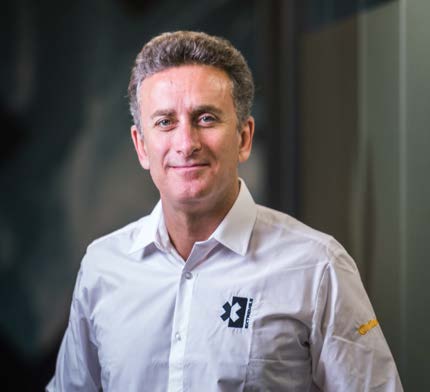
Alejandro Agag – Founder & CEO EXTREME E and Founder & Chairman FiA Formula E & E1 Series
Alejandro Agag is a former Spanish Politician, businessman, entrepreneur and visionary; Founder & Chairman of Formula E, Founder & CEO of Extreme E and Founder & Chairman of the new E1 series. Having won a seat in the European Parliament, becoming the youngest Spanish person to ever do so at the age of 28, Alejandro decided to leave the world of politics and move into motorsport. He began Formula E Holdings, winning the tender to promote the new FIA Formula E Championship the fastest-growing category in racing. Other ventures include Extreme E, a brand new electric off-road racing series that highlight the devastating effects climate change is having on our environments and E1, an Electric powerboat series with a boat that will revolutionize marine mobility. Agag also serves as Chairman of the Advisory Board of Planet First Partners, an impact investment fund focusing on sustainability transition
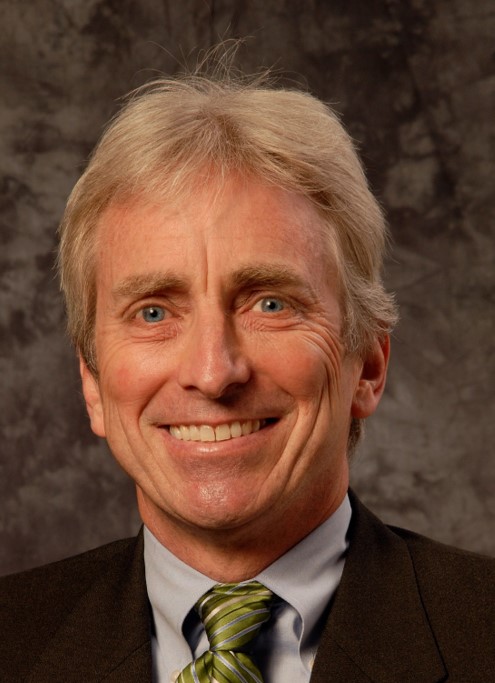
Ed Bernardon, Vice President Strategic Automotive Intiatives – Host
Ed is currently VP Strategic Automotive Initiatives at Siemens Digital Industries Software. Responsibilities include strategic planning in areas of design of autonomous/connected vehicles, lightweight automotive structures and interiors. He is also responsible for Future Car thought leadership including hosting the Future Car Podcast and development of cross divisional projects. Previously a founding member of VISTAGY that developed light-weight structure and automotive interior design software acquired by Siemens in 2011. Ed holds an M.S.M.E. from MIT, B.S.M.E. from Purdue, and MBA from Butler.
If you like this Podcast, you might also like:
- Championing Sustainability in Motorsport with Alejandro Agag- Part 1
- Carlo Mondavi’s Autonomous Electric Tractors for Sustainable, Affordable Farming – Part 1
- The Next Leap for Electric Vehicles with Will Graylin, Indigo Technologies – Part 1
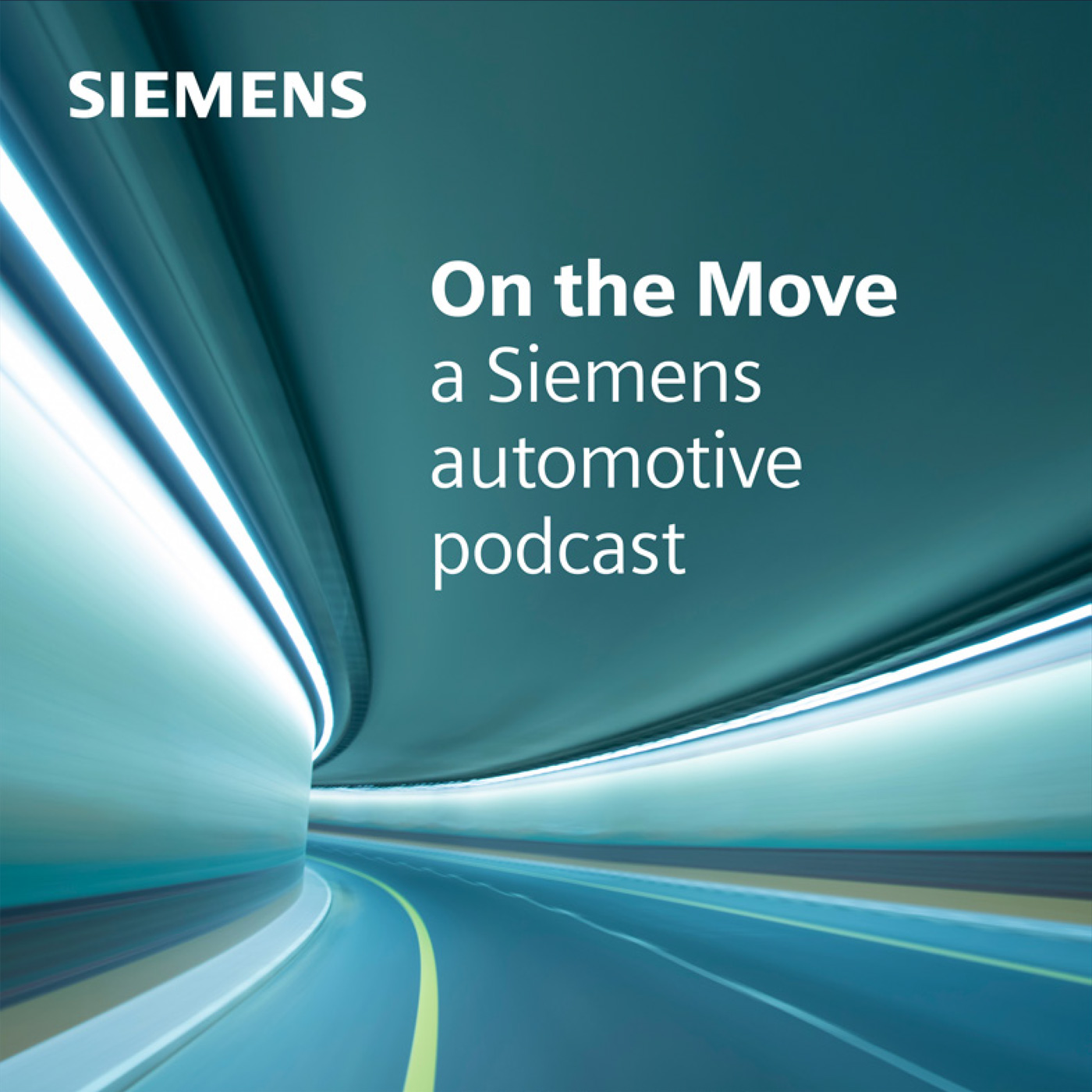
On the Move: A Siemens Automotive Podcast
The automotive and transportation industries are in the middle of a transformation in how vehicles are designed, made, and sold. Driven by an influx of new technologies, consumer demands, environmental pressures, and a changing workforce in factories and offices, automotive companies are pushing to reinvent fundamental aspects of their businesses. This includes developing more advanced and capable vehicles, identifying new revenue sources, improving customer experiences, and changing the ways in which features and functionality are built into vehicles.
Welcome to On the Move, a podcast from Siemens Digital Industries Software that will dive into the acceleration of mobility innovation amid unprecedented change in the automotive and transportation industries. Join hosts Nand Kochhar, VP of Automotive and Transportation, and Conor Peick, Automotive and Transportation Writer, as they dive into the shifting automotive landscape with expert guests from Siemens and around the industry. Tune in to learn about modern automotive design and engineering challenges, how software and electronics have grown in use and importance, and where the industries might be heading in the future.
